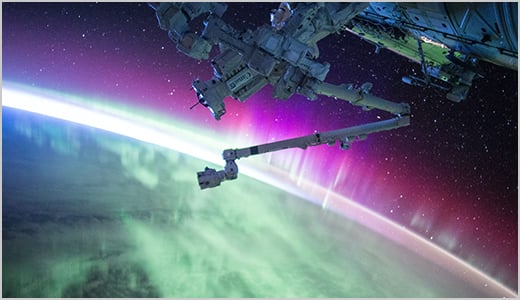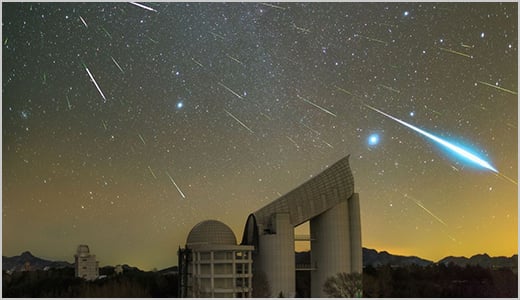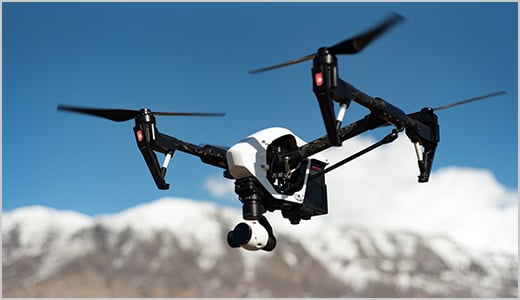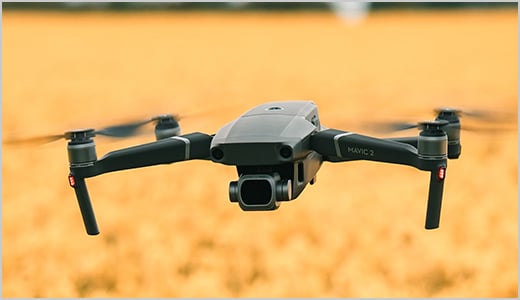
Journal Menu
► ▼ Journal Menu-
- Applied Sciences Home
- Aims & Scope
- Editorial Board
- Reviewer Board
- Topical Advisory Panel
- Instructions for Authors
- Special Issues
- Topics
- Sections & Collections
- Article Processing Charge
- Indexing & Archiving
- Editor’s Choice Articles
- Most Cited & Viewed
- Journal Statistics
- Journal History
- Journal Awards
- Society Collaborations
- Conferences
- Editorial Office
Journal Browser
► ▼ Journal BrowserNeed Help?
Announcements
26 June 2023
Applied Sciences | Top 20 Cited Papers in 2022 in the Section “Computing and Artificial Intelligence”
1. “A Secured Industrial Internet-of-Things Architecture Based on Blockchain Technology and Machine Learning for Sensor Access Control Systems in Smart Manufacturing”
by Hichem Mrabet, Adeeb Alhomoud, Abderrazek Jemai and Damien Trentesaux
Appl. Sci. 2022, 12(9), 4641; https://doi.org/10.3390/app12094641
Available online: https://www.mdpi.com/2076-3417/12/9/4641
2. “A Semi-Supervised Extreme Learning Machine Algorithm Based on the New Weighted Kernel for Machine Smell”
by Wei Dang, Jialiang Guo, Mingzhe Liu, Shan Liu, Bo Yang, Lirong Yin and Wenfeng Zheng
Appl. Sci. 2022, 12(18), 9213; https://doi.org/10.3390/app12189213
Available online: https://www.mdpi.com/2076-3417/12/18/9213
3. “A Survey on Artificial Intelligence (AI) and eXplainable AI in Air Traffic Management: Current Trends and Development with Future Research Trajectory”
by Augustin Degas, Mir Riyanul Islam, Christophe Hurter, Shaibal Barua, Hamidur Rahman, Minesh Poudel, Daniele Ruscio, Mobyen Uddin Ahmed, Shahina Begum, Md Aquif Rahman et al.
Appl. Sci. 2022, 12(3), 1295; https://doi.org/10.3390/app12031295
Available online: https://www.mdpi.com/2076-3417/12/3/1295
4. “A System for Standardizing and Combining U.S. Environmental Protection Agency Emissions and Waste Inventory Data”
by Ben Young, Wesley W. Ingwersen, Matthew Bergmann, Jose D. Hernandez-Betancur, Tapajyoti Ghosh, Eric Bell and Sarah Cashman
Appl. Sci. 2022, 12(7), 3447; https://doi.org/10.3390/app12073447
Available online: https://www.mdpi.com/2076-3417/12/7/3447
5. “An Improved Algorithm of Drift Compensation for Olfactory Sensors”
by Siyu Lu, Jialiang Guo, Shan Liu, Bo Yang, Mingzhe Liu, Lirong Yin and Wenfeng Zheng
Appl. Sci. 2022, 12(19), 9529; https://doi.org/10.3390/app12199529
Available online: https://www.mdpi.com/2076-3417/12/19/9529
6. “An Overview of Variants and Advancements of PSO Algorithm”
by Meetu Jain, Vibha Saihjpal, Narinder Singh and Satya Bir Singh
Appl. Sci. 2022, 12(17), 8392; https://doi.org/10.3390/app12178392
Available online: https://www.mdpi.com/2076-3417/12/17/8392
7. “Augmented, Virtual and Mixed Reality in Dentistry: A Narrative Review on the Existing Platforms and Future Challenges”
by Riccardo Monterubbianesi, Vincenzo Tosco, Flavia Vitiello, Giulia Orilisi, Franco Fraccastoro, Angelo Putignano and Giovanna Orsini
Appl. Sci. 2022, 12(2), 877; https://doi.org/10.3390/app12020877
Available online: https://www.mdpi.com/2076-3417/12/2/877
8. “BERT-Based Transfer-Learning Approach for Nested Named-Entity Recognition Using Joint Labeling”
by Ankit Agrawal, Sarsij Tripathi, Manu Vardhan, Vikas Sihag, Gaurav Choudhary and Nicola Dragoni
Appl. Sci. 2022, 12(3), 976; https://doi.org/10.3390/app12030976
Available online: https://www.mdpi.com/2076-3417/12/3/976
9. “Comparative Study of Machine Learning Classifiers for Modelling Road Traffic Accidents”
by Tebogo Bokaba, Wesley Doorsamy and Babu Sena Paul
Appl. Sci. 2022, 12(2), 828; https://doi.org/10.3390/app12020828
Available online: https://www.mdpi.com/2076-3417/12/2/828
10. “Dist-YOLO: Fast Object Detection with Distance Estimation”
by Marek Vajgl, Petr Hurtik and Tomáš Nejezchleba
Appl. Sci. 2022, 12(3), 1354; https://doi.org/10.3390/app12031354
Available online: https://www.mdpi.com/2076-3417/12/3/1354
11. “Driver Drowsiness Detection by Applying Deep Learning Techniques to Sequences of Images”
by Elena Magán, M. Paz Sesmero, Juan Manuel Alonso-Weber and Araceli Sanchis
Appl. Sci. 2022, 12(3), 1145; https://doi.org/10.3390/app12031145
Available online: https://www.mdpi.com/2076-3417/12/3/1145
12. “Educational AI Chatbots for Content and Language Integrated Learning”
by Kleopatra Mageira, Dimitra Pittou, Andreas Papasalouros, Konstantinos Kotis, Paraskevi Zangogianni and Athanasios Daradoumis
Appl. Sci. 2022, 12(7), 3239; https://doi.org/10.3390/app12073239
Available online: https://www.mdpi.com/2076-3417/12/7/3239
13. “Ergonomic Design of a Workplace Using Virtual Reality and a Motion Capture Suit”
by Ilona Kačerová, Jan Kubr, Petr Hořejší and Jana Kleinová
Appl. Sci. 2022, 12(4), 2150; https://doi.org/10.3390/app12042150
Available online: https://www.mdpi.com/2076-3417/12/4/2150
14. “Fake News Classification Based on Content Level Features”
by Chun-Ming Lai, Mei-Hua Chen, Endah Kristiani, Vinod Kumar Verma and Chao-Tung Yang
Appl. Sci. 2022, 12(3), 1116; https://doi.org/10.3390/app12031116
Available online: https://www.mdpi.com/2076-3417/12/3/1116
15. “Fractional-Order Controller for Course-Keeping of Underactuated Surface Vessels Based on Frequency Domain Specification and Improved Particle Swarm Optimization Algorithm”
by Guangyu Li, Yanxin Li, Huayue Chen and Wu Deng
Appl. Sci. 2022, 12(6), 3139; https://doi.org/10.3390/app12063139
Available online: https://www.mdpi.com/2076-3417/12/6/3139
16. “Improved YOLOv5: Efficient Object Detection Using Drone Images under Various Conditions”
by Hyun-Ki Jung and Gi-Sang Choi
Appl. Sci. 2022, 12(14), 7255; https://doi.org/10.3390/app12147255
Available online: https://www.mdpi.com/2076-3417/12/14/7255
17. “Options for and Challenges of Employing Digital Twins in Construction Management”
by Tareq Salem and Mihai Dragomir
Appl. Sci. 2022, 12(6), 2928; https://doi.org/10.3390/app12062928
Available online: https://www.mdpi.com/2076-3417/12/6/2928
18. “Privacy-Preserving Federated Learning Using Homomorphic Encryption”
by Jaehyoung Park and Hyuk Lim
Appl. Sci. 2022, 12(2), 734; https://doi.org/10.3390/app12020734
Available online: https://www.mdpi.com/2076-3417/12/2/734
19. “Securing SCADA Energy Management System under DDos Attacks Using Token Verification Approach”
by Yu-Sheng Yang, Shih-Hsiung Lee, Wei-Che Chen, Chu-Sing Yang, Yuen-Min Huang and Ting-Wei Hou
Appl. Sci. 2022, 12(1), 530; https://doi.org/10.3390/app12010530
Available online: https://www.mdpi.com/2076-3417/12/1/530
20. “Virtual Reality Metaverse System Supplementing Remote Education Methods: Based on Aircraft Maintenance Simulation”
by Hyeonju Lee, Donghyun Woo and Sunjin Yu
Appl. Sci. 2022, 12(5), 2667; https://doi.org/10.3390/app12052667
Available online: https://www.mdpi.com/2076-3417/12/5/2667
15 June 2023
Applied Sciences Receives an Increased CiteScore of 4.5

We are pleased to inform you that Applied Sciences‘ 2022 CiteScore is 4.5. Applied Sciences (ISSN: 2076-3417) now ranks Q1 in the “Category Engineering (General Engineering)” category. Our journal continues to build momentum in applied natural sciences. We would like to extend our congratulations to all concerned.
Applied Sciences’ CiteScore ranks as follows:
- Q1 (73 out of 302) in the "Engineering (General Engineering)" category;
- Q2 (42 out of 136) in the "Physics and Astronomy (Instrumentation)" category;
- Q2 (32 out of 92) in the "Chemical Engineering (Fluid Flow and Transfer Processes)" category;
- Q2 (287 out of 792) in the "Computer Science (Computer Science Applications)" category;
- Q2 (199 out of 453) in the "Materials Science (General Materials Science)" category;
- Q3 (35 out of 68) in the "Chemical Engineering (Process Chemistry and Technology)" category.
For more journal statistics, please visit https://www.mdpi.com/journal/applsci/stats.
15 June 2023
Meet Us at the 6th International Conference on Nanoenergy and Nanosystems (NENS 2023), 17–19 June 2023, Beijing, China

MDPI will be attending the 6th International Conference on Nanoenergy and Nanosystems (NENS 2023), held in Beijing, China, from 17 to 19 June 2023. Starting in 2014, NENS has been organized once every two years by the Beijing Institute of Nanoenergy and Nanosystems, Chinese Academy of Sciences (BINN, CAS). The conference has attracted high-profile scholars from around the world to deliver plenary and invited talks. This conference will provide a platform for scientists to exchange scientific information, build relationships, and possibly establish collaborations. During this conference, MDPI will welcome researchers from different backgrounds to visit and share their latest views as well as research with us.
The following MDPI journals will be represented:
- Energies;
- Applied Sciences;
- Nanoenergy Advances;
- Machines;
- ChemEngineering;
- Electronics;
- Technologies;
- Nanomaterials;
- Batteries.
If you are attending this conference, please stop by our booth. Our delegates look forward to meeting you in person to answer any questions that you may have. For more information about the conference, please visit the following link: http://www.nens.cn/.
6 June 2023
Topics Webinar | Smart Manufacturing and Industry 5.0, 15 June 2023

Welcome message by Dr. Dimitris Mourtzis, the webinar chair:
We welcome you to our webinar Smart Manufacturing and Industry 5.0. We will explore how the integration of advanced technologies is reshaping the manufacturing sector. Industry 5.0 represents a paradigm shift, where humans and intelligent machines collaborate in a seamless ecosystem. Our expert speakers will discuss the principles, trends, and transformative potential of smart manufacturing. We will delve into automation, AI, big data, and IoT, optimizing production and enabling real-time decision making. We will also highlight the importance of human workers in Industry 5.0, where collaborative robots, augmented reality, and cognitive computing unlock new possibilities. Therefore, we invite you to join us on this interesting webinar to uncover the potential of smart manufacturing and Industry 5.0, gain valuable insights, participate in stimulating discussions, and envision the future of manufacturing.
Date: 15 June 2023 at 9:00 a.m. CEST | 15:00 p.m. CST Asia
Register now for free!
Program:
|
Speaker/Presentation |
Time in CEST |
Time in EDT |
|
Dr. Dimitris Mourtzis Chair Introduction |
09:00–09:10 a.m. |
15:00–15:10 p.m. |
|
Dr. Pai Zheng Towards Mutual Cognitive Human–Robot Collaboration in Manufacturing |
9:10–9:30 a.m. |
15:10–15:30 p.m. |
|
Dr. Ang Liu AI-driven Engineering Design |
9:30–9:50 a.m. |
15:30–15:50 p.m. |
|
Dr. Dimitris Mourtzis Industrial Metaverse: Challenges & Opportunities |
9:50–10:10 a.m. |
15:50–16:10 p.m. |
|
Dr. Dimitris Mourtzis Closing of Webinar |
10:25–10:30 a.m. |
16:25–16:30 p.m. |
After registering, you will receive a confirmation email containing information on how to join the webinar. Registrations with academic institutional email addresses will be prioritized.
Unable to attend? Register anyway and we’ll let you know when the recording is available to watch.
Webinar Chair and Keynote Speakers:
- Dimitris Mourtzis, Department of Mechanical Engineering and Aeronautics, University of Patras, Patras, Greece;
- Pai Zheng, Department of Industrial and Systems Engineering, The Hong Kong Polytechnic University, Hong Kong Special Administrative Region of China;
- Ang Liu, The University of New South Wales, Kensington, Australia.
Relevant Topic:
“Smart Manufacturing and Industry 5.0”
Abstract submission deadline: 30 September 2023
Manuscript submission deadline: 30 November 2023
5 May 2023
Meet Us at the 9th National Conference on Luminescence Properties of Doped Nanomaterials (NMLP 2023), 19–22 May 2023, Nanning, Guangxi, China

A range of MDPI journals will be attending the 9th National Conference on Luminescent Properties of Doped Nanomaterials (NMLP 2023) as exhibitors. This meeting will be held in Nanning, Guangxi, China, from 19 to 22 May 2023.
Guangxi University was established by the State Key Laboratory of Lifetime Safety of Special Metal Materials and Composite Structures and was jointly built by the province and the ministry. This is a grand meeting for scholars in the field of luminescence. It will comprehensively display the latest progress and achievements of basic research and applied research in the fields of doped nano-luminescent materials, optoelectronic materials, micro-nano devices, and related applications, and will discuss the latest developments related to disciplines. The topic of this conference is "Luminescent Properties of Doped Nanomaterials", and the topics covered include: perovskite materials and applications, rare earth luminescent materials and applications, quantum dot luminescent materials and devices, biomedical photonics and optical information processing, micro-/nanofiber optics, devices and sensors, energy materials, and micro-/nano-optoelectronic devices. These topics will be presented in the form of invited reports of the conference, invited reports of branch sessions, oral reports, and posters.
The following MDPI journals will be represented:
- Applied Sciences;
- Physics;
- Optics;
- Inorganics.
If you are attending this conference, please feel free to start a conversation with us at our booth. Our delegates look forward to meeting you in person and answering any questions that you may have.
For more information about the conference, please visit https://www.bagevent.com/event/NMLP2023/p/510700, or contact the Applied Sciences Editorial Office at applsci@mdpi.com.
24 April 2023
Applied Sciences Webinar | In Silico Methods to Unravel the Mysteries of Protein Biological Function, 27 April 2023

Proteins play a key role in every biological process that takes place in our body, from transporting molecules across our cells and providing mechanical strength to our tissues, to transmitting neurochemical signals between neurons and recognizing external pathogens. This extremely large variety of biological functions is encoded in the surprisingly small alphabet of only twenty amino acids. How is that possible? How can a simple sequence of amino acids lead to such well-defined biological tasks?
The answer lies in the fact that this sequence actually exists as a corporeal structure with an evolutionary-conserved shape and the specific ability to perform biologically relevant motions. This opens several fascinating research questions that the scientific community has been trying to answer in the last half century, such as the following: how exactly is an amino acid sequence translated into a specific protein structure? How does the structure change its conformation during the protein functional cycle or under external perturbations? Can we identify the relevant motions that enable a protein to perform its biological tasks? What are the causes of disease-associated protein malfunctions at both the sequence, structure, and dynamics level?
Advances in computational approaches in the last few decades have made it feasible to answer some of these questions, by exploiting methodologies such as Molecular Dynamics (MD), Normal Mode Analysis (NMA), and Elastic Network Models (ENMs). In this webinar, we will discuss some of the most recent applications of these computational approaches to unravel the mysteries of the biological function of specific protein systems.
Date: 27 April 2023 at 01:30 p.m. CEST | 7:30 a.m. EDT | 7:30 p.m. CST Asia
Webinar ID: 836 7194 4334
Register now for free!
Program
|
Speaker/Presentation |
Time in CEST |
Time in CST |
|
Dr. Domenico Scaramozzino |
1:30–1:40 p.m. |
7:30–7:40 p.m. |
|
Dr. Michal Cifra |
1:40–2:05 p.m. |
7:40–8:05 p.m. |
|
Short Q&A |
2:05–2:10 p.m. |
8:05–8:10 p.m. |
|
Dr. Laura Orellana |
2:10–2:35 p.m. |
8:10–8:35 p.m. |
|
Short Q&A |
2:35–2:40 p.m. |
8:35–8:40 p.m. |
|
Prof. Patrick Senet |
2:40–3:05 p.m. |
8:40–9:05 p.m. |
|
Short Q&A |
3:05–3:10 p.m. |
9:05–9:10 p.m. |
|
General Discussion Session |
3:10–3:30 p.m. |
9:10–9:30 p.m. |
|
Dr. Domenico Scaramozzino |
3:30 p.m. |
9:30 p.m. |
After registering, you will receive a confirmation email containing information on how to join the webinar. Registrations with academic institutional email addresses will be prioritized.
Unable to attend? Register anyway and we will let you know when the recording is available to watch.
Webinar chair and keynote speakers:
Dr. Domenico Scaramozzino, Department of Oncology-Pathology, Karolinska Institutet, Solna, Sweden
Dr. Michal Cifra, Institute of Photonics and Electronics of the Czech Academy of Sciences, Prague, Czechia
Dr. Laura Orellana, Protein Dynamics and Mutation Lab, Karolinska Institute, Sweden
Prof. Patrick Senet, Laboratoire ICB, UMR 6303 CNRS-Université de Bourgogne, Dijon, France
Relevant Special Issue:
“Computational Approaches for Protein Dynamics and Function”
Guest Editors: Prof. Dr. Robert Jernigan and Dr. Domenico Scaramozzino
Deadline for manuscript submissions: 31 May 2023
21 April 2023
Meet Us at the 40th Annual Conference of Chinese Society for Imaging Science and Technology (SCIST 2023), 13–16 May 2023, Kunming, Yunnan, China

A range of MDPI journals will be attending the 40th Annual Conference of Chinese Society for Imaging Science and Technology (SCIST 2023) as exhibitors. This meeting will be held in Kunming, Yunnan, China, from 13 to 16 May 2023.
The theme of this conference is "Strengthening the Driven by Technological Innovation and Building the Future of Photosensitive Imaging". The conference will invite well-known experts and scholars in the field of photosensitive imaging and related fields to make special reports and keynote reports of the conference. It will also organize academic exchanges in 17 sub-sessions in conjunction with various professional committees. The scale of the meeting is expected to be 1000 people.
The following MDPI journals will be represented:
- Applied Sciences;
- J. Imaging;
- Sensors;
- Chemosensors;
- Photonics.
If you are attending this conference, please feel free to start a conversation with us at our booth #1-12. Our delegates look forward to meeting you in person and answering any questions that you may have.
For more information about the conference, please visit https://2021csist.scimeeting.cn/cn/web/index/, or contact the Applied Sciences Editorial Office at applsci@mdpi.com.
12 April 2023
2023 International Day of Human Space Flight
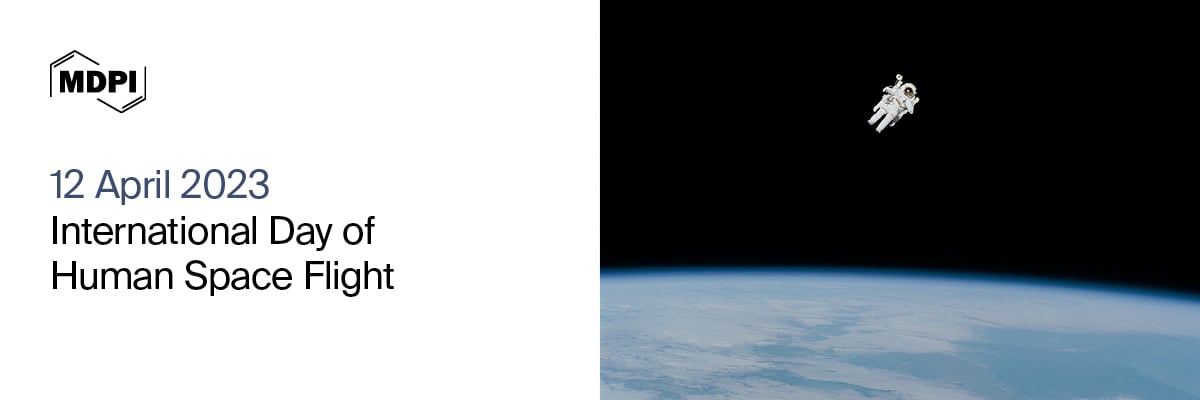
The International Day of Human Space Flight commemorates the first manned space flight by the Soviet citizen Yuri Gagarin on 12 April 1961. This day was declared the International Day of Human Space Flight in 2011 by the United Nations General Assembly resolution, to celebrate the beginning of the human space age. It reaffirms the important contribution of space science and technology in achieving sustainable development goals and increasing the well-being of countries and people, as well as ensuring the realization of their aspiration to preserve outer space for peaceful purposes.
In the course of human exploration of space, we have established many remarkable achievements and breakthrough milestones:
- In 1957, the first human-made Earth satellite, Sputnik I, was launched into outer space;
- In 1961, Yuri Gagarin became the first person to orbit the Earth;
- In 1969, Neil Armstrong became the first human to set foot upon the surface of the Moon;
- In 1996, the first spacecraft in human history successfully landed on Mars;
- In 1998, the International Space Station, a 16-nation international space program, launched for the first time;
- In 2009, the Kepler space telescope was launched, which has helped humans find thousands of exoplanets;
- In 2015, SpaceX successfully launched its Falcon 9 rocket and recovered the first stage.
To further explore the information about space on the 2023 International Day of Human Space Flight, we have gathered academic research from several journals on the topic of space flight, all of which are open access, enabling practitioners, policymakers and people around the world to access and share up-to-date scientific knowledge.
Let us celebrate the International Day of Human Space Flight together.

 |
 |
 |
 |
 |
 |
 |
 |
 |
 |
 |
 |


| Whirl Tower Demonstration of an SMA Blade Twist System Actuators 2022, 11(6), 141; https://doi.org/10.3390/act11060141 |
|
| A Tutorial and Review on Flight Control Co-Simulation Using Matlab/Simulink and Flight Simulators Automation 2022, 3(3), 486-510; https://doi.org/10.3390/automation3030025 |
|
| Reconfigurable Fault-Tolerant Control for Spacecraft Formation Flying Based on Iterative Learning Algorithms Appl. Sci. 2022, 12(5), 2485; https://doi.org/10.3390/app12052485 |
|
| Wilderness Search for Lost Persons Using a Multimodal Aerial-Terrestrial Robot Team Robotics 2022, 11(3), 64; https://doi.org/10.3390/robotics11030064 |
|
|
|
|
| Special Issue: Advances in CubeSat Sails and Tethers | Special Issue: Aerospace Mechanisms and Actuation |
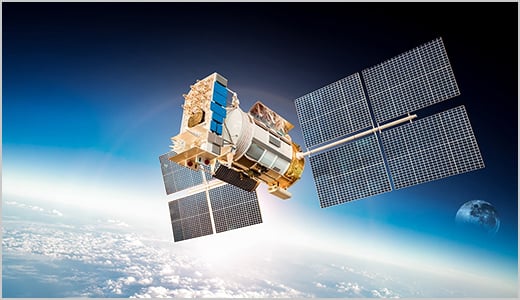 |
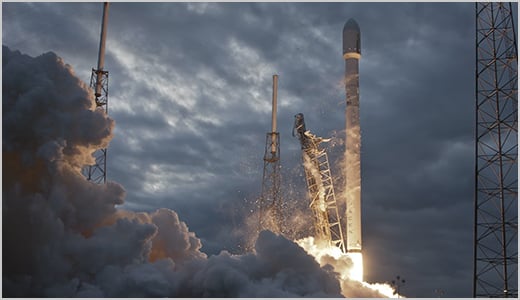 |
| Special Issue: Advanced Fault Diagnosis and Fault-Tolerant Control Technology of Spacecraft | Special Issue: Smart Sensors and Devices: Recent Advances and Applications |
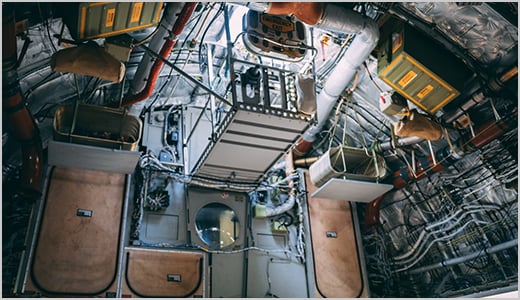 |
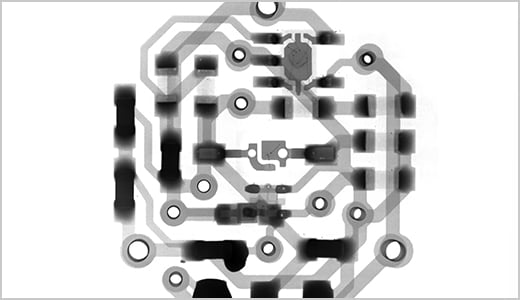 |


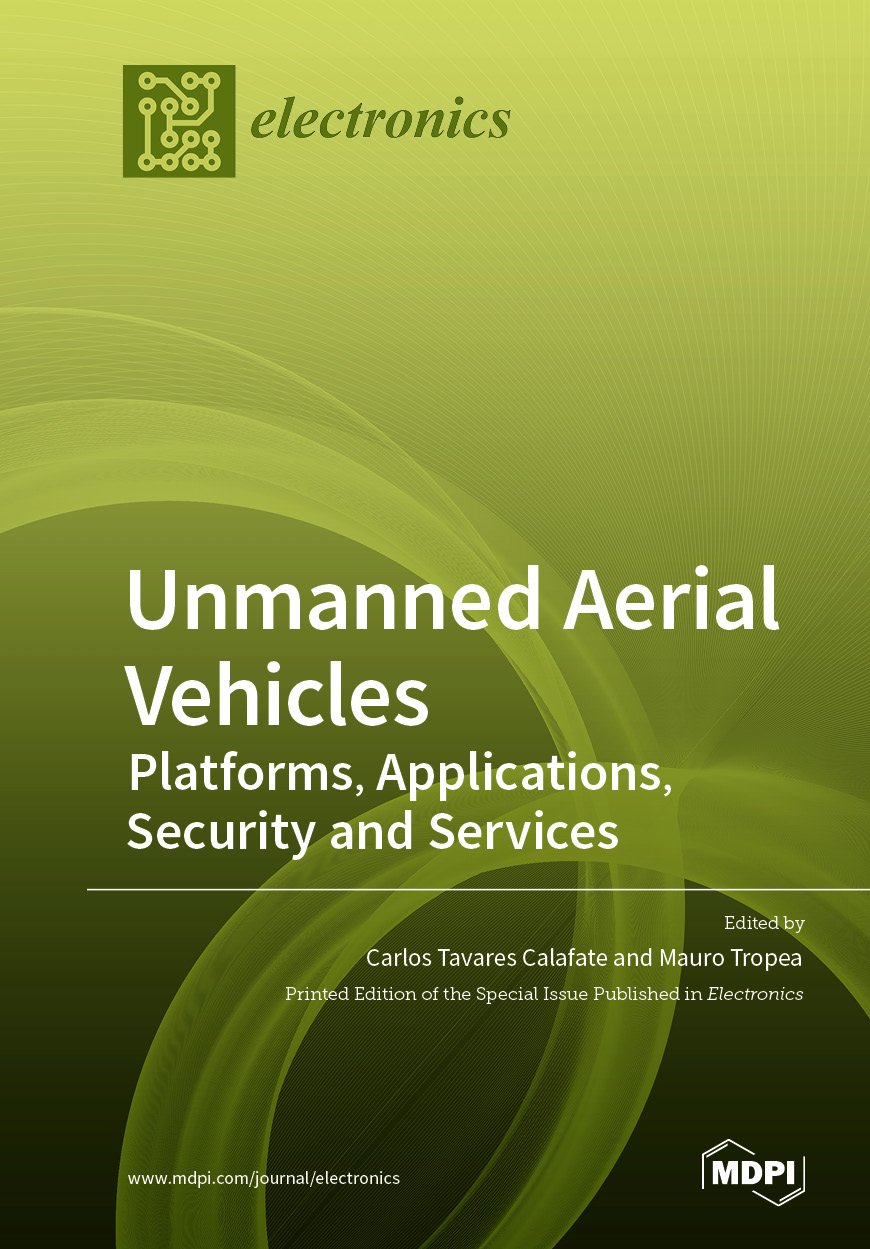 |
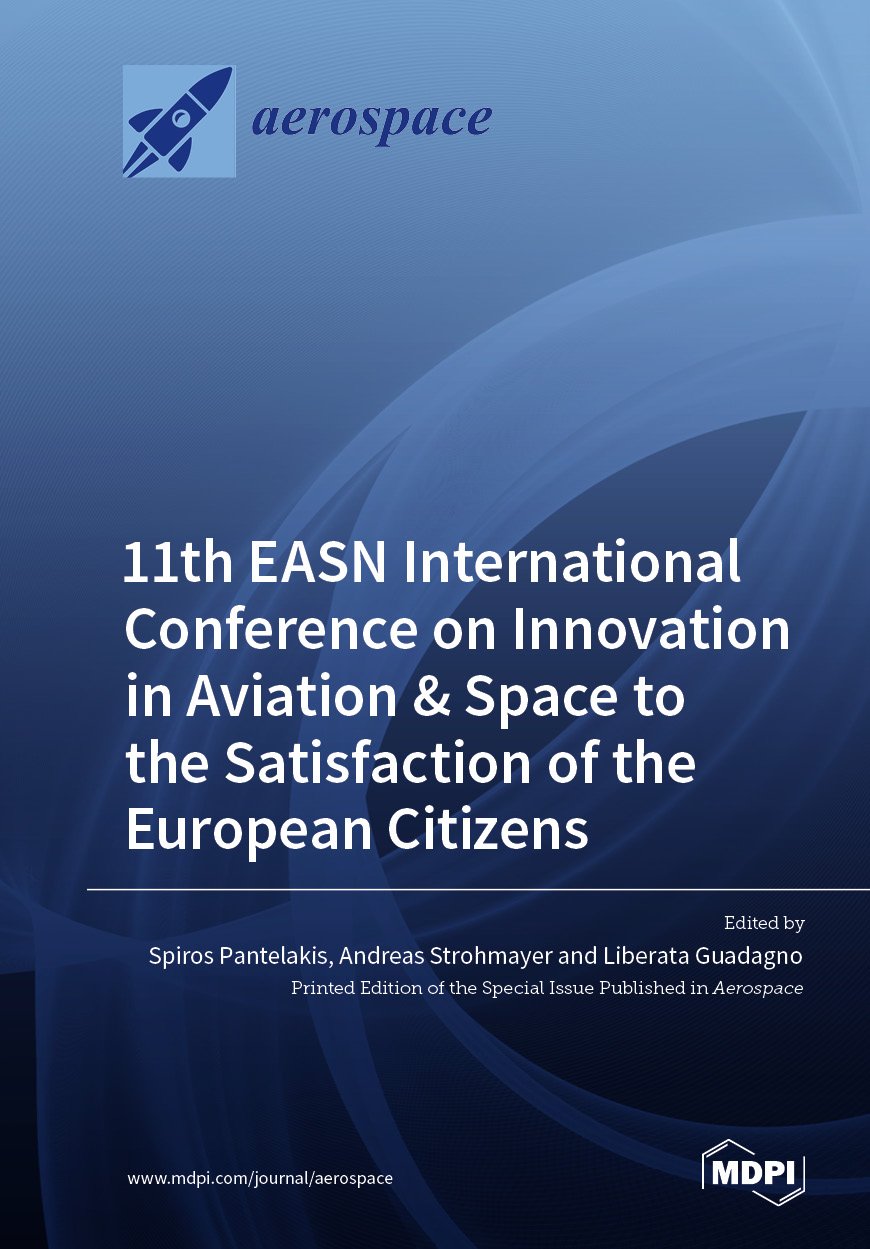 |
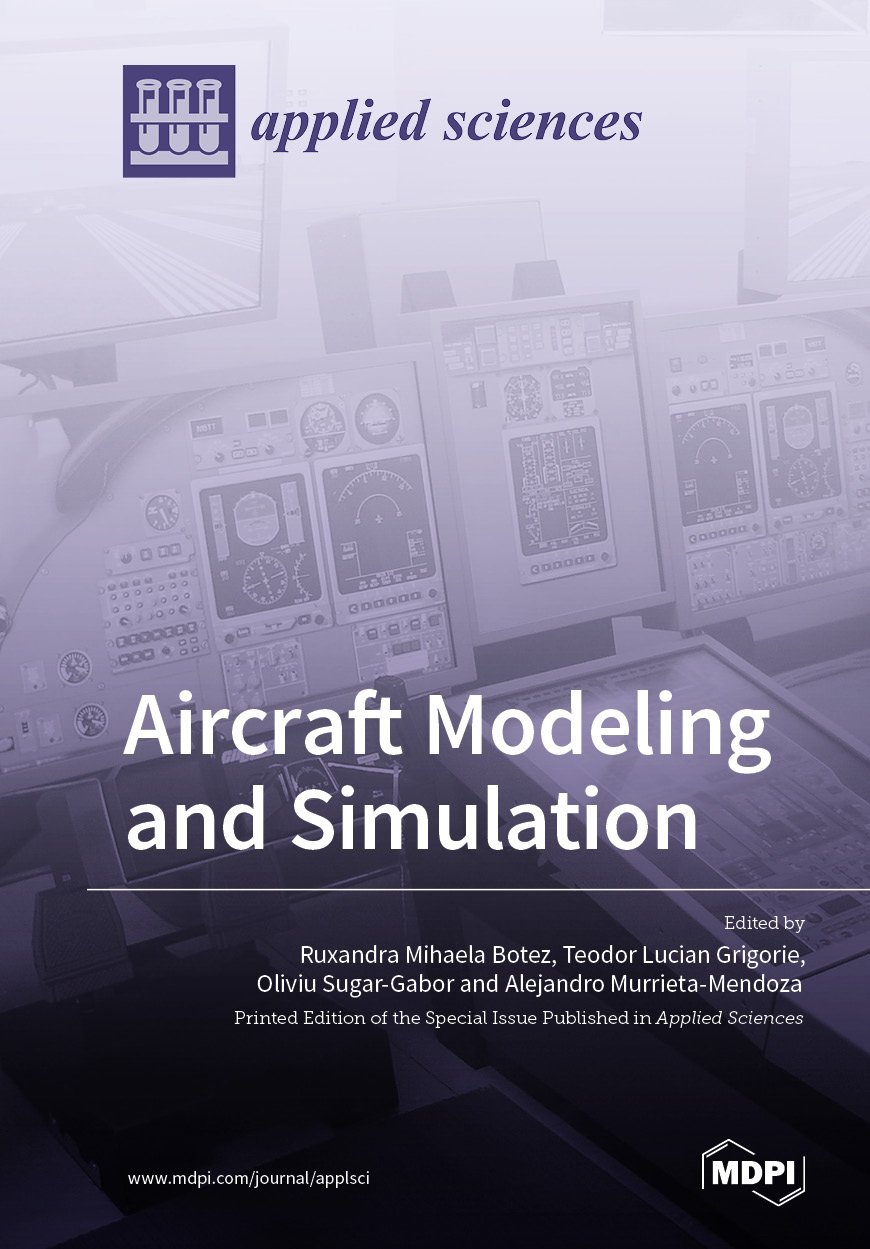 |
4 April 2023
Applied Sciences Webinar | Advances in Acoustic Emission Technique: Test Interpretation and Numerical Simulations, 13 April 2023

Acoustic emission (AE) is a known technique for obtaining information about the critical conditions of structural systems. This system could be a tectonic plate with a characteristic length of km or an electronic device with a length of millimeters. The excitation that produces the acoustic emission events can be induced by different sources, including forces or other mechanical excitation. Several global parameters can be computed using AE data, and it is known that the evolution of these parameters in particular circumstances defines when and how the structural damage process evolves to collapse. Generally, it is not possible to prove a bidirectional, unique link between the AE signals and the damage process. For this reason, the numerical simulation of these kinds of mechanisms could furnish useful information to aid in the interpretation of AE experimental tests. Several strategies can be used, from the classical finite element model approaches to discrete element procedures, such as peridynamics, or other similar strategies where the possibilities of simulating spontaneous fractures can be more naturally harnessed. We posit that achieving such results could be a useful contribution to the scientific community. Therefore, the aim of this webinar is to bring together researchers working in the field of AE and numerical simulation, both at the material and structure scale. With it, we expect to provide novel insights on the application of this synergic approach to a wide variety of materials (concrete, steel, masonry, composites, etc.) in the field of physics, the mechanics of materials, and civil engineering.
Webinar date and time: 13 April 2023 at 11:00 a.m. CEST | 5:00 a.m. EST | 5:00 p.m. CST Asia
Webinar ID: 872 8465 8746
|
Register now for free! |
Keynote Speakers:
- Prof. Alex Hansen, Norwegian University of Science and Technology, Trondheim, Norway;
- Prof. Florin Bobaru, University of Nebraska-Lincoln, Lincoln, USA;
- Prof. Ignacio Iturrioz, Federal University of Rio Grande do Sul, Porto Alegre, Brazil.
Program:
|
Speaker/Presentation |
Time in CEST or Italian time |
|
Prof. Giuseppe Lacidogna Chair Introduction |
11:05–11:15 |
|
Prof. Alex Hansen Presentation Title: "Can we predict catastrophic failure before it happens?" |
11:15–11:35 |
|
Q&A Session* |
11:35–11:45 |
|
Prof. Florin Bobaru Presentation Title: "Peridynamic modeling of fracture and damage in porous and heterogeneous materials: validation against acoustic emission data". |
11:45–12:05 |
|
Q&A Session* |
12:05–12:15 |
|
Prof. Ignacio Iturrioz Presentation Title: "Application of Discrete Element strategies to aid the interpretation of acoustic emission data in the damage process of structures". |
12:15–12:35 |
|
Q&A Session* |
12:35–12:45 |
|
Prof. Giuseppe Lacidogna Closing of Webinar |
12:45–12:50 |
|
*There will be 10 minutes between sessions to answer questions and promote discussion about the topics covered in the presentations. |
|
Relevant Special Issue:
“Advances in Acoustic Emission Technique: Tests Interpretation and Numerical Simulations”
Guest Editors: Prof. Dr. Giuseppe Lacidogna and Prof. Dr. Ignacio Iturrioz
Deadline for manuscript submissions: 31 July 2023
This is a free webinar. After registering, you will receive a confirmation email containing information on how to join the webinar. Registrations with academic institutional email addresses will be prioritized.
Certificates of attendance will be delivered to those who attend the live webinar.
Can’t attend? Register anyway and we’ll let you know when the recording is available to watch.
27 March 2023
Applied Sciences | Invitation to Read Selected Papers from Editor’s Choice Articles
The goal of “Editor’s Choice Articles” project is to promote high-quality articles published in Applied Sciences (ISSN: 2076-3417). Please find below the list of articles carefully handpicked by the scientific editors of the journal, which we believe will be of interest to you.
1. “Applications of Cold Atmospheric Pressure Plasma Technology in Medicine, Agriculture and Food Industry”
by Mária Domonkos, Petra Tichá, Jan Trejbal and Pavel Demo
Appl. Sci. 2021, 11(11), 4809; https://doi.org/10.3390/app11114809
Available online: https://www.mdpi.com/2076-3417/11/11/4809
2. “Hydrothermal and Entropy Investigation of Ag/MgO/H2O Hybrid Nanofluid Natural Convection in a Novel Shape of Porous Cavity”
by Nidal Abu-Libdeh, Fares Redouane, Abderrahmane Aissa, Fateh Mebarek-Oudina, Ahmad Almuhtady, Wasim Jamshed and Wael Al-Kouz
Appl. Sci. 2021, 11(4), 1722; https://doi.org/10.3390/app11041722
Available online: https://www.mdpi.com/2076-3417/11/4/1722
3. “Extensive Benchmarking of DFT+U Calculations for Predicting Band Gaps”
by Nicole E. Kirchner-Hall, Wayne Zhao, Yihuang Xiong, Iurii Timrov and Ismaila Dabo
Appl. Sci. 2021, 11(5), 2395; https://doi.org/10.3390/app11052395
Available online: https://www.mdpi.com/2076-3417/11/5/2395
4. “A Review on Recent Advancements of Graphene and Graphene-Related Materials in Biological Applications”
by Federica Catania, Elena Marras, Mauro Giorcelli, Pravin Jagdale, Luca Lavagna, Alberto Tagliaferro and Mattia Bartoli
Appl. Sci. 2021, 11(2), 614; https://doi.org/10.3390/app11020614
Available online: https://www.mdpi.com/2076-3417/11/2/614
5. “Fe3O4 Nanoparticles: Structures, Synthesis, Magnetic Properties, Surface Functionalization, and Emerging Applications”
by Minh Dang Nguyen, Hung-Vu Tran, Shoujun Xu and T. Randall Lee
Appl. Sci. 2021, 11(23), 11301; https://doi.org/10.3390/app112311301
Available online: https://www.mdpi.com/2076-3417/11/23/11301
6. “Hybrid Metal/Polymer Filaments for Fused Filament Fabrication (FFF) to Print Metal Parts”
by Claudio Tosto, Jacopo Tirillò, Fabrizio Sarasini and Gianluca Cicala
Appl. Sci. 2021, 11(4), 1444; https://doi.org/10.3390/app11041444
Available online: https://www.mdpi.com/2076-3417/11/4/1444
7. “Biogenic Nanoparticles: Synthesis, Characterisation and Applications”
by Bilal Mughal, Syed Zohaib Javaid Zaidi, Xunli Zhang and Sammer Ul Hassan
Appl. Sci. 2021, 11(6), 2598; https://doi.org/10.3390/app11062598
Available online: https://www.mdpi.com/2076-3417/11/6/2598
8. “Polyphenols: A Promising Avenue in Therapeutic Solutions for Wound Care”
by Inês Guimarães, Sara Baptista-Silva, Manuela Pintado and Ana L. Oliveira
Appl. Sci. 2021, 11(3), 1230; https://doi.org/10.3390/app11031230
Available online: https://www.mdpi.com/2076-3417/11/3/1230
9. “Fundamentals of Building Deconstruction as a Circular Economy Strategy for the Reuse of Construction Materials”
by Gaetano Bertino, Johannes Kisser, Julia Zeilinger, Guenter Langergraber, Tatjana Fischer and Doris Österreicher
Appl. Sci. 2021, 11(3), 939; https://doi.org/10.3390/app11030939
Available online: https://www.mdpi.com/2076-3417/11/3/939
10. “Non-Destructive Testing Applications for Steel Bridges”
by Seyed Saman Khedmatgozar Dolati, Nerma Caluk, Armin Mehrabi and Seyed Sasan Khedmatgozar Dolati
Appl. Sci. 2021, 11(20), 9757; https://doi.org/10.3390/app11209757
Available online: https://www.mdpi.com/2076-3417/11/20/9757
11. “The DEMO Water-Cooled Lead–Lithium Breeding Blanket: Design Status at the End of the Pre-Conceptual Design Phase”
by Pietro Arena, Alessandro Del Nevo, Fabio Moro, Simone Noce, Rocco Mozzillo, Vito Imbriani, Fabio Giannetti, Francesco Edemetti, Antonio Froio, Laura Savoldi et al.
Appl. Sci. 2021, 11(24), 11592; https://doi.org/10.3390/app112411592
Available online: https://www.mdpi.com/2076-3417/11/24/11592
12. “Enhancement of Antimicrobial Activity of Alginate Films with a Low Amount of Carbon Nanofibers (0.1% w/w)”
by Isaías Sanmartín-Santos, Sofía Gandía-Llop, Beatriz Salesa, Miguel Martí, Finn Lillelund Aachmann and Ángel Serrano-Aroca
Appl. Sci. 2021, 11(5), 2311; https://doi.org/10.3390/app11052311
Available online: https://www.mdpi.com/2076-3417/11/5/2311
13. “The Behavior of Hybrid Fiber-Reinforced Concrete Elements: A New Stress-Strain Model Using an Evolutionary Approach”
by Ali A. Abdulhameed, Alaa Hussein Al-Zuhairi, Salah R. Al Zaidee, Ammar N. Hanoon, Ahmed W. Al Zand, Mahir M. Hason and Haider A. Abdulhameed
Appl. Sci. 2022, 12(4), 2245; https://doi.org/10.3390/app12042245
Available online: https://www.mdpi.com/2076-3417/12/4/2245
14. “Effects of Adding Alkali Metals and Organic Cations to Cu-Based Perovskite Solar Cells”
by Riku Okumura, Takeo Oku, Atsushi Suzuki, Masanobu Okita, Sakiko Fukunishi, Tomoharu Tachikawa and Tomoya Hasegawa
Appl. Sci. 2022, 12(3), 1710; https://doi.org/10.3390/app12031710
Available online: https://www.mdpi.com/2076-3417/12/3/1710
15. “Geometry and Distortion Prediction of Multiple Layers for Wire Arc Additive Manufacturing with Artificial Neural Networks”
by Christian Wacker, Markus Köhler, Martin David, Franziska Aschersleben, Felix Gabriel, Jonas Hensel, Klaus Dilger and Klaus Dröder
Appl. Sci. 2021, 11(10), 4694; https://doi.org/10.3390/app11104694
Available online: https://www.mdpi.com/2076-3417/11/10/4694
16. “Buckling Analysis of CNTRC Curved Sandwich Nanobeams in Thermal Environment”
by Ahmed Amine Daikh, Mohammed Sid Ahmed Houari, Behrouz Karami, Mohamed A. Eltaher, Rossana Dimitri and Francesco Tornabene
Appl. Sci. 2021, 11(7), 3250; https://doi.org/10.3390/app11073250
Available online: https://www.mdpi.com/2076-3417/11/7/3250
17. “Effect of Printing Layer Thickness on the Trueness and Margin Quality of 3D-Printed Interim Dental Crowns”
by Gülce Çakmak, Alfonso Rodriguez Cuellar, Mustafa Borga Donmez, Martin Schimmel, Samir Abou-Ayash, Wei-En Lu and Burak Yilmaz
Appl. Sci. 2021, 11(19), 9246; https://doi.org/10.3390/app11199246
Available online: https://www.mdpi.com/2076-3417/11/19/9246
18. “Nanoparticles—Plant Interaction: What We Know, Where We Are?”
by Ewa Kurczyńska, Kamila Godel-Jędrychowska, Katarzyna Sala and Anna Milewska-Hendel
Appl. Sci. 2021, 11(12), 5473; https://doi.org/10.3390/app11125473
Available online: https://www.mdpi.com/2076-3417/11/12/5473
We would like to thank all of the research groups that authored these exceptional papers for their contribution. We sincerely hope you find these articles of Applied Sciences as useful and insightful.



